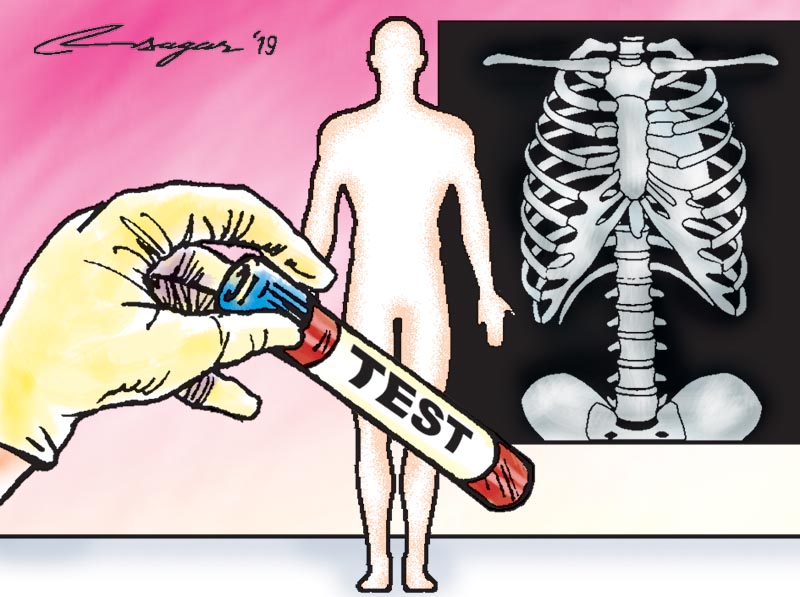Whole body checkup: What exactly is it?
A normal report of investigations included in various “whole body checkup packages” does not mean that our body is perfectly healthy. This is a misconception among the general public. No textbook has mentioned about such “whole body checkup packages”
Many health centres, especially private hospitals and nursing homes, are putting up advertisements for cheaper investigation packages as “full body checkup package” or “whole body checkup package”. The investigation’s parameters included in such packages are not the same and differ from hospital to hospital. A few such packages include thyroid function test, ECHO, Holter, TMT and lipid profile. Thus, the package rates also vary. Such packages are also found in many hospitals in India.
In addition to the history, symptoms and clinical examination findings of the patients, an investigation helps clinicians to come nearer to diagnosis. The investigations which clinicians routinely advise reflect the function of some important organs superficially only. In other words, we can take such tests as routine screening tests for health fitness.
These investigations usually include haemoglobin (Hb), white blood cell (WBC) count, differential count, red blood cell (RBC) count, platelet count, bleeding time, clotting time, blood grouping, blood sugar, renal function test, liver function test, urine and stool routine microscopic examination, USG of the abdomen and pelvis, chest X-ray and ECG. Most of the time, it is not even necessary to perform all these tests for each and every patient. Other tests such as peripheral blood smear, thyroid function test, ECHO, Holter, TMT, CT & MRI scans blood, sputum or urine culture, endoscopy, colonoscopy are advised according to the individual patient’s needs.
The human body is very complex and thus medical science. Pathology (abnormality) in one organ or system may adversely affect another organ and system. For instance, in kidney failure, urine cannot be excreted, and thus fluid accumulates in the body, which ultimately leads to heart failure and difficulty in breathing and even death of the patient. Similarly, rise in blood urea because of kidney failure may lead to uremia, ultimately causing an altered level of sensorium or even unconsciousness. This is because of the effect of uremia on the brain’s function.
Another investigation, known to the general public as “video x-ray” is ultrasonography. It helps to know about the size, shape and position of the organs, but it does not tell about how the organ is functioning. For example, the liver may be normal in USG findings but a rise in bilirubin or liver enzymes (which may be because of altered liver function) cannot be seen by a USG.
Although all routine investigations along with USG and CT Scan are advised in a young adult patient having severe abdominal pain, doctors might still not be able to diagnose the disease. But a simple test which is not routinely done, that is peripheral blood smear, may show blast cells (immature cells) and may give a clue to leukaemia or blood cancer. Here, haemoglobin and blood count may be normal.
Urea and creatinine tests are done to assess kidney function. Until significant kidney tissue damage and its function deteriorate, these markers may not increase. So, normal urea and creatinine do not always mean a normal kidney.
A positive pregnancy test in urine also does not mean that the pregnancy occurred at the normal site inside the uterus. The baby (foetus) may grow at abnormal sites as in a fallopian tube, ovary and even in the abdominal cavity. So in addition to the urine pregnancy test, a USG of the abdomen in early pregnancy is important to know the foetal sac position.
The cervix is the area present at the lower part of the uterus. The uterus and cervix may be normal in USG findings, but the possibility of cervical cancer may already be there. Despite normal USG findings, a Pap smear test must be done for cervical cancer.
Some of these examples above show that each and every investigation has its own value and impact. One investigation report if abnormal may compel clinicians to advise another, a little more sophisticated, for further confirmation of that particular disease. Doing routine basic investigations periodically may be helpful to detect abnormalities so that it is not too late to overcome the damages.
Doing a yearly Pap smear test helps to detect cervical pathology on time so that we can proceed for treatment at the early pre-cancerous stage. If the test is not done and this stage is not detected, it may convert into the advanced cancerous stage.
The investigation’s report depends on the knowledge and skill of the concerned health personnel, quality of machines and their certification and approval, quality of reagents and other materials used, storage system and temperature maintenance. In today’s scenario, with many allegations of negligence by healthcare professionals, clinicians have to work under pressure because advising limited investigations may sometimes miss the clue for diagnosis whereas advising more investigations may be an extra burden on the patients.
Clinicians need to correlate the history, symptoms, findings of clinical examination and the investigation’s reports to diagnose a disease. A normal report of investigations included in various “whole body checkup packages” does not mean that our body is perfectly healthy. This is a misconception among the general public. No textbook has mentioned such “whole body checkup packages”.
Pathak is an anaesthesiologist at UCMSTH, Rupandehi






